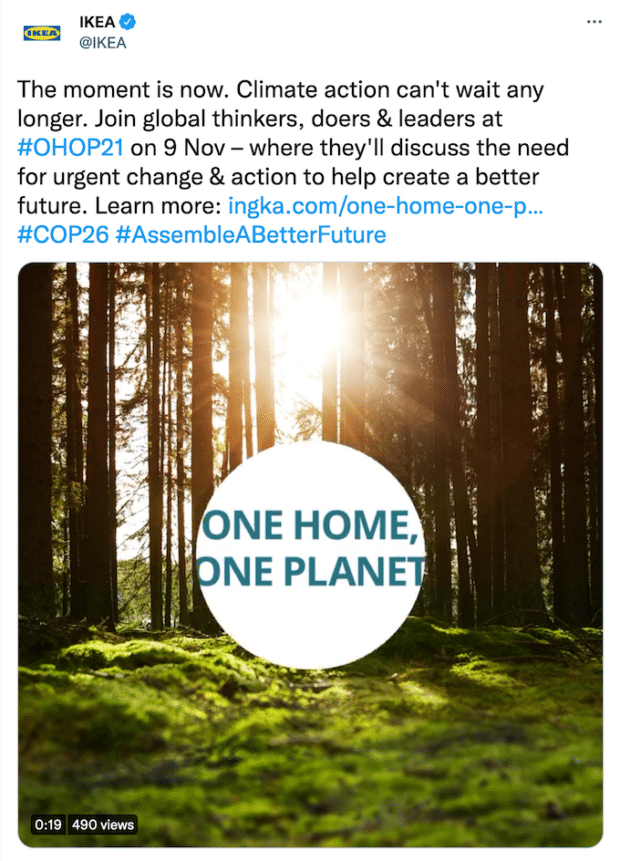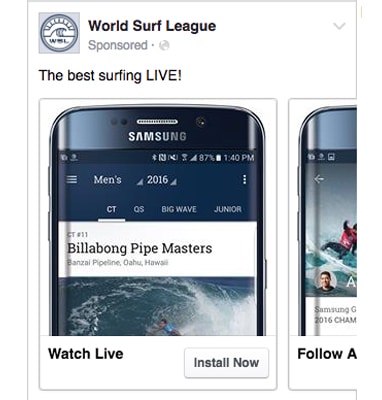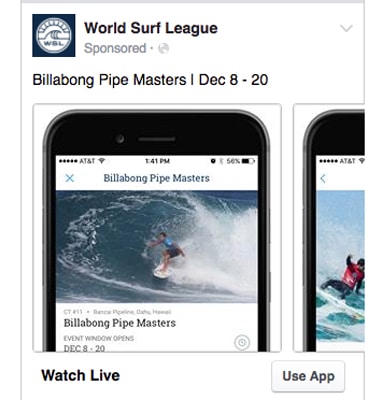The Beginner’s Guide to A/B Testing on Social Media
A/B testing on social media is a powerful tool for making the best ads for your specific situation.
A/B testing goes back to the days before the internet. Direct-mail marketers used it to conduct small tests on a fraction of their contact lists before committing to the massive cost of printing and mailing a full campaign.
On social media, A/B testing produces insights in real-time. When you make it a regular part of your social media campaign, you can refine your strategies on the fly.
This article will help you understand what A/B testing is and how to make it work for your brand.
Bonus: Get a free, customizable competitive analysis template to easily size up the competition and identify opportunities for your brand to pull ahead.
What is A/B testing?
A/B testing (also known as split testing) applies the scientific method to your marketing strategy. In it, you test small variations in your social media content to find out the content that best reaches your audience.
To perform A/B testing, also known as split testing, you separate your audience into two random groups. Each group is then shown a different variation of the same ad. After that, you compare the responses to determine which variation works better for you.
Depending on your social media strategy, you can use different metrics to measure success in the way that’s most relevant to you.
When doing this kind of social testing, be sure to change just one element in the two variations. You’re measuring your audience’s reaction to the entire ad. If you vary the image and the headline, for example, then you won’t know which is responsible for the differences in your two ads’ reception. If you want to test a lot of elements, you’ll have to conduct multiple tests.
Why do A/B testing on social media?
A/B testing is important because it helps you figure out what works for your specific context. There are lots of studies that look at what the most effective marketing strategies are in general. General rules are a great place to start, but general best practices aren’t always the best in every situation. By doing your own tests, you can turn general ideas into specific results for your brand.
Testing tells you about your audience’s specific likes and dislikes. It can also tell you about differences between particular sections of your audience. After all, people who follow you on Twitter might not have the same preferences as people who follow you on LinkedIn.
You can get insights from A/B testing any type of content, not just ads. Testing your organic content can also provide valuable information about what content is worth paying to promote.
Over time, you will gain insights about what works best for you on each social network. But you should continue to test small variations, even when you think you have a winning formula. The more you test, the better your understanding will be.
What can you A/B test?
You can A/B test any component of your social media content, but let’s look at some of the most common elements to test.
Post text
There are lots of things about the type and style of language in your social media posts that you can test. For example:
- Post length (number of characters)
- Post style: a quote versus a key statistic, for example, or a question versus a statement
- Use of emoji
- Use of a digit for posts linking to a numbered list
- Use of punctuation
- Tone of voice: casual versus formal, passive versus active, and so on
Source: @IKEA
Source: @IKEA
In these two tweets, IKEA has kept the same video content, but varied the ad copy that accompanies it.
Link preview content
The headline and description in a linked article preview are highly visible and important to test. Keep in mind that you can edit the headline in the link preview, so it does not have to be the same as the headline on your website.
Calls to action
Your call to action (CTA) is another important part of your marketing. It’s where you ask readers to engage. Getting this right is critical, so be sure to hone in on the best CTA through social media A/B testing.
Source: Facebook
The World Surf League has kept the same ad structure. But each one version has Install Now as the CTA, while the other has Use App.
Use of image or video
While the research suggests that posts with images and videos perform best overall, it’s important to test this theory with your audience. For example, you could test:
- Text only versus posts with an image or video
- Regular image versus animated GIF
- Photos of people or products versus graphs or infographics
- Length of video
Source: @seattlestorm
Source: @seattlestorm
Here, the Seattle Storm have taken two different approaches to the images in their promotion of shooting guard Jewell Loyd. One version uses a single image, while the other uses two in-game images.
Ad format
Test different formats to see which are most effective for your content. For example, in your Facebook advertising, maybe carousel ads work best for product announcements, but a local ad with a “Get Directions” button works best when you’re launching a new store.
A/B testing Facebook ads formats against one another can help you determine which to use for each type of promotion.
Hashtags
Hashtags can extend your reach, but do they annoy your audience or drive down engagement? You can find out with social media A/B testing.
Don’t just test using a hashtag versus using no hashtag. You should also test:
- Multiple hashtags versus a single hashtag
- Which industry hashtags result in the best engagement
- Hashtag placement within the messaging (at the end, the start, or in the middle)
If you use a branded hashtag, be sure to test it against other industry hashtags, too.
Bonus: Get a free, customizable competitive analysis template to easily size up the competition and identify opportunities for your brand to pull ahead.
Target audience
This one is a little different. Rather than showing variations of your post or ad to similar groups, you show the same ad to different audiences to see which gets a better response.
For example, A/B testing Facebook ads might show you that some groups respond well to retargeting ads, but others find them creepy. Testing theories like this can tell you exactly how particular audience segments respond.
Targeting options vary by social network, but you can generally segment by gender, language, device, platform, and even specific user characteristics like interests and online behaviors.
Your results can help you develop specialized campaigns and a strategy for each audience.
Profile elements
This also works a bit differently. You’re not creating two different versions and sending them out to distinct groups. Instead, you should monitor your profile on a particular social network to establish a baseline number of new followers per week. Then, try changing one element, like your profile image or your bio, and monitor how your new follower rate changes.
Try to post the same kind of content and the same number of posts during the weeks of your testing to minimize the influence of your posts and maximize the impact of the profile change you’re testing.
Airbnb, for example, often updates their Facebook profile image to coordinate with seasonal events or campaigns. You can bet they’ve tested to ensure this strategy helps, rather than hurts, their Facebook engagement.
Website content
You can also use social media A/B testing to help you make decisions about the content on your website.
For example, A/B testing social media images can provide a sense of what works best with a particular value proposition. You can use that information to influence which image to place on the landing page for the relevant campaign.
Just don’t forget to test to make sure the image performs as well on the website as it did on the social media.
How to run an A/B test on social media
The basic process of A/B testing has remained the same for decades: test small variations one at a time to discover what works best right now for your current audience.
The great news is that social media has made it much easier and more efficient, so you can run tests on the fly rather than waiting months for results to come in by mail.
Remember: the idea is to test one variation against another, then compare the responses and choose a winner.
Here’s the basic structure of an A/B test on social media:
- Choose an element to test.
- Dig into existing knowledge for ideas about what will work best—but never be afraid to challenge assumptions.
- Create two variations based on what your research (or your gut) tells you. Remember to have only one element differ between the variations.
- Show each variation to a segment of your followers.
- Track and analyze your results.
- Choose the winning variation.
- Share the winning variation with your entire list, or test it against another small variation to see if you can improve your results further.
- Share what you learn throughout your organization to build a library of best practices for your brand.
- Start the process over again.
Best practices for A/B testing to keep in mind
Social media marketing tools make it easy to generate lots of data about your audience, but lots of data isn’t the same thing as lots of insight. These best practices will help you
Know what your social media goals are
A/B testing is a tool, not an end in itself. When you have an overarching social media strategy, you can use social testing to move your brand towards goals that are relevant to your overall business plan.
Have a clear question in mind
The most effective A/B tests are ones that respond to a clear question. When designing a test, ask yourself “why am I testing this particular element?”
Learn the basics of statistics
Even if you don’t have a background in quantitative research, a little bit of knowledge about the math behind your social testing will go a long way.
If you’re familiar with concepts like statistical significance and sample size, you’ll be able to interpret your data with more confidence.
Hootsuite can help you manage your next social media A/B test. Schedule your posts, track the success of your efforts, and use your results to adjust your strategy.
The post The Beginner’s Guide to A/B Testing on Social Media appeared first on Social Media Marketing & Management Dashboard.
Categories
- 60% of the time… (1)
- A/B Testing (2)
- Ad placements (3)
- adops (4)
- adops vs sales (5)
- AdParlor 101 (43)
- adx (1)
- algorithm (1)
- Analysis (9)
- Apple (1)
- Audience (1)
- Augmented Reality (1)
- authenticity (1)
- Automation (1)
- Back to School (1)
- best practices (2)
- brand voice (1)
- branding (1)
- Build a Blog Community (12)
- Case Study (3)
- celebrate women (1)
- certification (1)
- Collections (1)
- Community (1)
- Conference News (1)
- conferences (1)
- content (1)
- content curation (1)
- content marketing (1)
- contests (1)
- Conversion Lift Test (1)
- Conversion testing (1)
- cost control (2)
- Creative (6)
- crisis (1)
- Curation (1)
- Custom Audience Targeting (4)
- Digital Advertising (2)
- Digital Marketing (6)
- DPA (1)
- Dynamic Ad Creative (1)
- dynamic product ads (1)
- E-Commerce (1)
- eCommerce (2)
- Ecosystem (1)
- email marketing (3)
- employee advocacy program (1)
- employee advocates (1)
- engineers (1)
- event marketing (1)
- event marketing strategy (1)
- events (1)
- Experiments (21)
- F8 (2)
- Facebook (64)
- Facebook Ad Split Testing (1)
- facebook ads (18)
- Facebook Ads How To (1)
- Facebook Advertising (30)
- Facebook Audience Network (1)
- Facebook Creative Platform Partners (1)
- facebook marketing (1)
- Facebook Marketing Partners (2)
- Facebook Optimizations (1)
- Facebook Posts (1)
- facebook stories (1)
- Facebook Updates (2)
- Facebook Video Ads (1)
- Facebook Watch (1)
- fbf (11)
- first impression takeover (5)
- fito (5)
- Fluent (1)
- Get Started With Wix Blog (1)
- Google (9)
- Google Ad Products (5)
- Google Analytics (1)
- Guest Post (1)
- Guides (32)
- Halloween (1)
- holiday marketing (1)
- Holiday Season Advertising (7)
- Holiday Shopping Season (4)
- Holiday Video Ads (1)
- holidays (4)
- Hootsuite How-To (3)
- Hootsuite Life (1)
- how to (5)
- How to get Instagram followers (1)
- How to get more Instagram followers (1)
- i don't understand a single thing he is or has been saying (1)
- if you need any proof that we're all just making it up (2)
- Incrementality (1)
- influencer marketing (1)
- Infographic (1)
- Instagram (39)
- Instagram Ads (11)
- Instagram advertising (8)
- Instagram best practices (1)
- Instagram followers (1)
- Instagram Partner (1)
- Instagram Stories (2)
- Instagram tips (1)
- Instagram Video Ads (2)
- invite (1)
- Landing Page (1)
- link shorteners (1)
- LinkedIn (22)
- LinkedIn Ads (2)
- LinkedIn Advertising (2)
- LinkedIn Stats (1)
- LinkedIn Targeting (5)
- Linkedin Usage (1)
- List (1)
- listening (2)
- Lists (3)
- Livestreaming (1)
- look no further than the new yorker store (2)
- lunch (1)
- Mac (1)
- macOS (1)
- Marketing to Millennials (2)
- mental health (1)
- metaverse (1)
- Mobile App Marketing (3)
- Monetizing Pinterest (2)
- Monetizing Social Media (2)
- Monthly Updates (10)
- Mothers Day (1)
- movies for social media managers (1)
- new releases (11)
- News (72)
- News & Events (13)
- no one knows what they're doing (2)
- OnlineShopping (2)
- or ari paparo (1)
- owly shortener (1)
- Paid Media (2)
- People-Based Marketing (3)
- performance marketing (5)
- Pinterest (34)
- Pinterest Ads (11)
- Pinterest Advertising (8)
- Pinterest how to (1)
- Pinterest Tag helper (5)
- Pinterest Targeting (6)
- platform health (1)
- Platform Updates (8)
- Press Release (2)
- product catalog (1)
- Productivity (10)
- Programmatic (3)
- quick work (1)
- Reddit (3)
- Reporting (1)
- Resources (34)
- ROI (1)
- rules (1)
- Seamless shopping (1)
- share of voice (1)
- Shoppable ads (4)
- Skills (28)
- SMB (1)
- SnapChat (28)
- SnapChat Ads (8)
- SnapChat Advertising (5)
- Social (169)
- social ads (1)
- Social Advertising (14)
- social customer service (1)
- Social Fresh Tips (1)
- Social Media (5)
- social media automation (1)
- social media content calendar (1)
- social media for events (1)
- social media management (2)
- Social Media Marketing (49)
- social media monitoring (1)
- Social Media News (4)
- social media statistics (1)
- social media tracking in google analytics (1)
- social media tutorial (2)
- Social Toolkit Podcast (1)
- Social Video (5)
- stories (1)
- Strategy (608)
- terms (1)
- Testing (2)
- there are times ive found myself talking to ari and even though none of the words he is using are new to me (1)
- they've done studies (1)
- this is also true of anytime i have to talk to developers (1)
- tiktok (8)
- tools (1)
- Topics & Trends (3)
- Trend (12)
- Twitter (15)
- Twitter Ads (5)
- Twitter Advertising (4)
- Uncategorised (9)
- Uncategorized (13)
- url shortener (1)
- url shorteners (1)
- vendor (2)
- video (10)
- Video Ads (7)
- Video Advertising (8)
- virtual conference (1)
- we're all just throwing mountains of shit at the wall and hoping the parts that stick don't smell too bad (2)
- web3 (1)
- where you can buy a baby onesie of a dog asking god for his testicles on it (2)
- yes i understand VAST and VPAID (1)
- yes that's the extent of the things i understand (1)
- YouTube (13)
- YouTube Ads (4)
- YouTube Advertising (9)
- YouTube Video Advertising (5)






